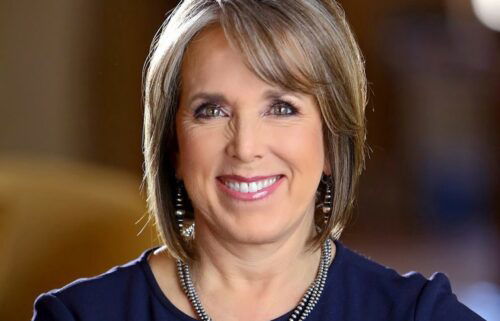Connecticut banks struggle to make hay from pandemic-induced deposit flood
Click here for updates on this story
HARTFORD, Conn. (Hartford Business Journal) — Connecticut bank accounts are positively brimming with cash, thanks to COVID-19 federal stimulus and the pandemic’s ongoing impact on consumers’ spending and saving habits.
Across all 56 banks operating in Connecticut, customer deposits over the last year have spiked by more than $28 billion, or nearly 21%.
It’s by far the sharpest growth Connecticut accounts have seen since at least the turn of the century, according to a Hartford Business Journal analysis of Federal Deposit Insurance Corp. data. The influx has been similar nationwide, with U.S. banks taking in an additional $2 trillion as of June, much of it from Paycheck Protection Program business loans and individual stimulus payments. Area bankers say the growth has also been driven by a flight to safety by many consumers, who have moved investments into bank accounts and generally saved more and spent less this year amid economic uncertainty caused by the COVID-19 pandemic.
“This is truly an unprecedented flow of funds into the banking system in such a short period,” Deloitte financial services advisors wrote in a September research report.
But the situation has also put banks in a bit of a pickle. Lenders use customer deposits to make new loans and other investments in order to produce a profit margin.
Normally, a big increase in balances would be a good thing. Plus, it generally indicates that customers like a bank’s service and offerings.
“But the second step of that is then ‘what do you do with that money, what do you invest it in?’ ” said Paul H. Bruce, executive vice president and chief financial officer at Danbury-based Union Savings Bank, where deposits have grown about 22% this year, well above Connecticut’s average annual deposit growth rate of 4% to 6%.
With loan demand generally not keeping pace with the spike in deposits, and a low-interest environment in general, there are no easy answers.
“There’s really not anything that will give you a good return as the money sits there,” said George Hermann, CEO of Windsor Federal Savings Bank, which has seen its deposits grow by nearly $100 million, or 21%, during the first nine months of 2020.
Many banks are parking some excess deposits in safe, low-yield investments with the U.S. Treasury or Federal Reserve.
Meantime, banks are simultaneously reducing what it costs them to hold those deposits, which means lowering interest rates on customer checking and savings accounts and higher-cost certificates of deposit.
The average interest rate on a one-year CD with less than $100,000 was 0.17% as of Nov. 16, according to the FDIC.
“There’s really no other choice,” said Bruce, who noted that bank profitability depends on the spread between what lenders earn on loan and investment interest vs. what they pay out to consumers.
Lowering interest rates, which has happened at virtually every bank in Connecticut and nationwide this year, can be a delicate dance. Banks don’t want to upset customers, but depositors will likely find similarly lower rates elsewhere, too.
“You want to be there for the customer. You want to be fair,” said Paul Young, CFO of Middletown-based Liberty Bank, the third-largest Connecticut-headquartered lender. “I don’t want to have the lowest rate, but I don’t want to have the highest one either.”
Liberty tacked on nearly $1 billion in deposits between Jan. 1 and Sept. 30, which is four or five times more than could be expected in a typical year. Young estimates that roughly half of the increase is pandemic related, while the remainder is from a mix of strategic initiatives, such as a greater focus on government banking, and typical deposit growth unrelated to coronavirus.
Banks that already have low deposit costs and can’t make up for the surge in account balances with rate reductions alone may be forced to cut overhead expenses.
“That’s not something any company wants to get into,” Union Savings’ Bruce said. “We have not had to do that, luckily.”
A challenge, but not a crisis
Inflated deposits and low rates are one challenge for banks. Another is a decrease in fee income, as transaction activity has fallen this year. Loan portfolios are also more stressed than usual, particularly for banks with a greater number of hospitality and retail borrowers.
However, lenders remain well capitalized and don’t view the situation as an emergency.
Banks that juggle their mix of liabilities and assets the best will come out stronger when the pandemic subsides and economy rebounds, and those that manage the situation poorly could weaken their position and become acquisition targets, Liberty’s Young said.
“I have over 700 employees depending on me,” he said. “Asset management is the financial heartbeat of the company. I don’t want to overstate it, but banks could succeed or fail during this time.”
One reason that many may not fail is because of stronger capital requirements financial regulators put into place after the Great Recession, a period in which banks suffered from a lack of liquidity.
“I think the best news heading into this crisis is that the industry was just a lot stronger than it was 10 years ago,” Bruce said. “It can handle the margin compression for a short period of time, but it’s not a long-term pleasant situation.”
Much will depend on how COVID-19 progresses in the year ahead, whether recently introduced vaccines are effective, and how the economy responds.
All of the potential scenarios make budgeting for next year harder than ever.
“It’s the most difficult budget I’ve ever been involved with in my 20 years in banking because of all the uncertainty,” Bruce said.
Balances swell
As measured by the FDIC, in-state bank deposits stood at $162.88 billion as of June 30, 2020, compared with $134.82 billion a year prior.
The double-digit percentage growth swamps the previous two-decade record of 8.9%, observed in mid-2009, as Connecticut was just emerging from the nearly two-year Great Recession.
This year’s April-to-June quarter saw a flurry of federal stimulus hit bank accounts nationwide, including forgivable PPP loans to employers — many of which are still sitting in area accounts, surprising some bankers — and roughly $270 billion in direct payments to consumers.
Across the U.S., banks have seen their deposits approach $17 trillion, up from $13.3 trillion at the start of 2020, though the growth has subsided somewhat since June, falling to $15.78 trillion as of October, according to data from the Federal Reserve Bank of St. Louis.
Despite the national trend, some Connecticut banks have continued to see deposit growth following the stimulus influx. That includes Union Savings, Windsor Federal and Liberty, which all saw some deposit growth in the third quarter.
“To some extent, that was a surprise,” said Union’s Bruce.
Part of it has to do with the PPP, which Congress extended over the summer, giving borrowers more time to spend down the money. Roughly three-quarters of the PPP funds held in Liberty accounts were still there as of the third week of November, Young said.
Barring further stimulus, deposits will likely shrink from their recent highs, potentially starting with the current final quarter of 2020.
However, Young said balances may remain elevated overall, particularly if consumers are alarmed by the recent increases in COVID-19 infections, which are projected to continue into January.
“The spike in cases is here, there are increased hospitalizations, and we’re looking at potential lockdowns again,” he said.
Please note: This content carries a strict local market embargo. If you share the same market as the contributor of this article, you may not use it on any platform.




